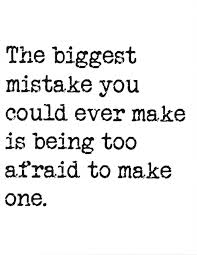"In the case of mathematics, there is a persistent attempt to erase the subjective and affective in favour of: mathematics that is as dry as dust, as exciting as a telephone book, as remote as the laws of infangthief of 15th century Scotland.."
David and Hersh
Ask yourself this question: How mathematically curious are my students?
- Always
- Often
- Sometimes
- Never
In a traditional classroom set up, the answer will almost unequivocally be "Never". Baring those students who are naturally inclined to learn maths intuitively and where the system fails to bog them down :)
In a maths inquiry classroom, students are :
- Being curious
- Making conjectures
- Not worrying about uncertainty/mistakes
- Using intuition, and
- Asking "Why?!"
Curiosity. What kind of questions can we ask students in order to dispel the fear of maths and invoke passion within them?
Think of a great question you asked your class lately. I asked my students how many elephants they think would fit in our classroom. It took at least 30 minutes of our class time and I strongly feel every minute was well spent. What I was looking for, as I watched them discuss the problem, was animation. A spark in their eyes. I saw plenty of that. They were discussing a mathematical concept even without realising it.
Making conjectures. Is this an habitual practice in the classroom? After every problem posed, do we encourage students to take a good shot at the answer. Does it seem plausible? Is it practical? Does it feel right?I shared my problem with conjecture the other day. Why do we need to estimate the weight of things? I do not have a weighing scale at home and every time I travel abroad, I feel that I have exceeded the permitted 20 kilograms and will be fined by a nasty person at the airport . Then, because my early maths education never really considered the importance of conjecture in real life, I always depend on others to lift my bag and guess the weight. Some shake their heads and give me a doomed look; on good days I get a reassuring nod. Bottom line is without a weighing scale, I am lost. My students got so excited listening to my helplessness, they vowed never to suffer like me. The estimation lesson that ensued was, needless to say, an engaging one.
Mistakes. High up on my board, in bold, are the words : "Mistakes are welcome." And the students should know that you truly mean that. I eagerly seek out mistakes. I make the students highlight or annotate their mistakes and share it with the class. They have realised that addressing mistakes and sharing them helps the learning community of the classroom. It help me address conceptual issues right then and there. Our goal as educators would be to create a fearless learning environment where students tackle and engage with mistakes. Learning objective? HOW to tackle mistakes! Have you ever been stuck on a problem and then approached someone for help and, as you are articulating it to the person, the answer just pops out from god knows where? Well, it happens to me a lot. Or, as you are explaining something to someone, another aspect of the issue comes to light? The explosive power that lies behind engaging in dialogue or group work.
Intuition. As I watch Sebastian Thrun , (CEO and cofounder of Udacity) talk about intuition and how he came up with an equation long before proving it mathematically, I realised how important it is to connect to something emotionally for it to make sense to you. Not any one else, but you. So the child who has got it and is excited about a math problem is definitely emotionally involved with the problem. The intuitive is present and maths ceases to be about boring numbers and becomes a real life issue you want to explore.
Why? At times, I wait with bated breath for students to ask "But why??!" These moments determine how my lessons take their course. A great question can turn your whole lesson plan upside down and when you reflect upon it at the end of the day, you realise that the lesson was a much more relevant and engaging one than the one you had planned. As educators, let us keep those questions coming!
If you have any great moments that link to these pointers, please do share. I would love to use them in my classroom.
Acknowledgement:
Thank you to Dr. Jo Boaler for inspiring me to write this post.
Bibliography:
http://www.collectorsprints.com/17/antiqueprint/school2


Comments
Post a Comment
Thank you for taking the time to read my blog.